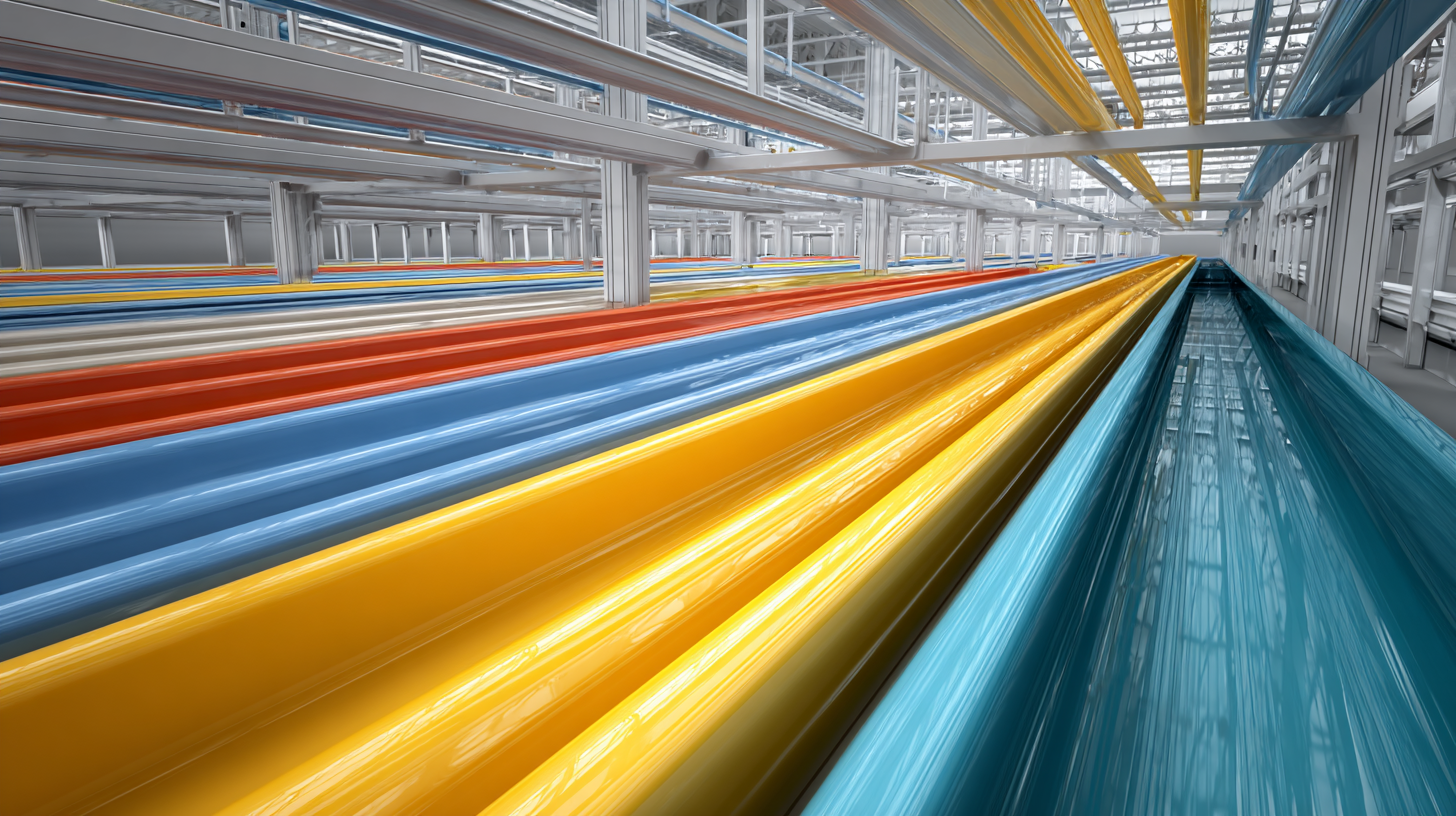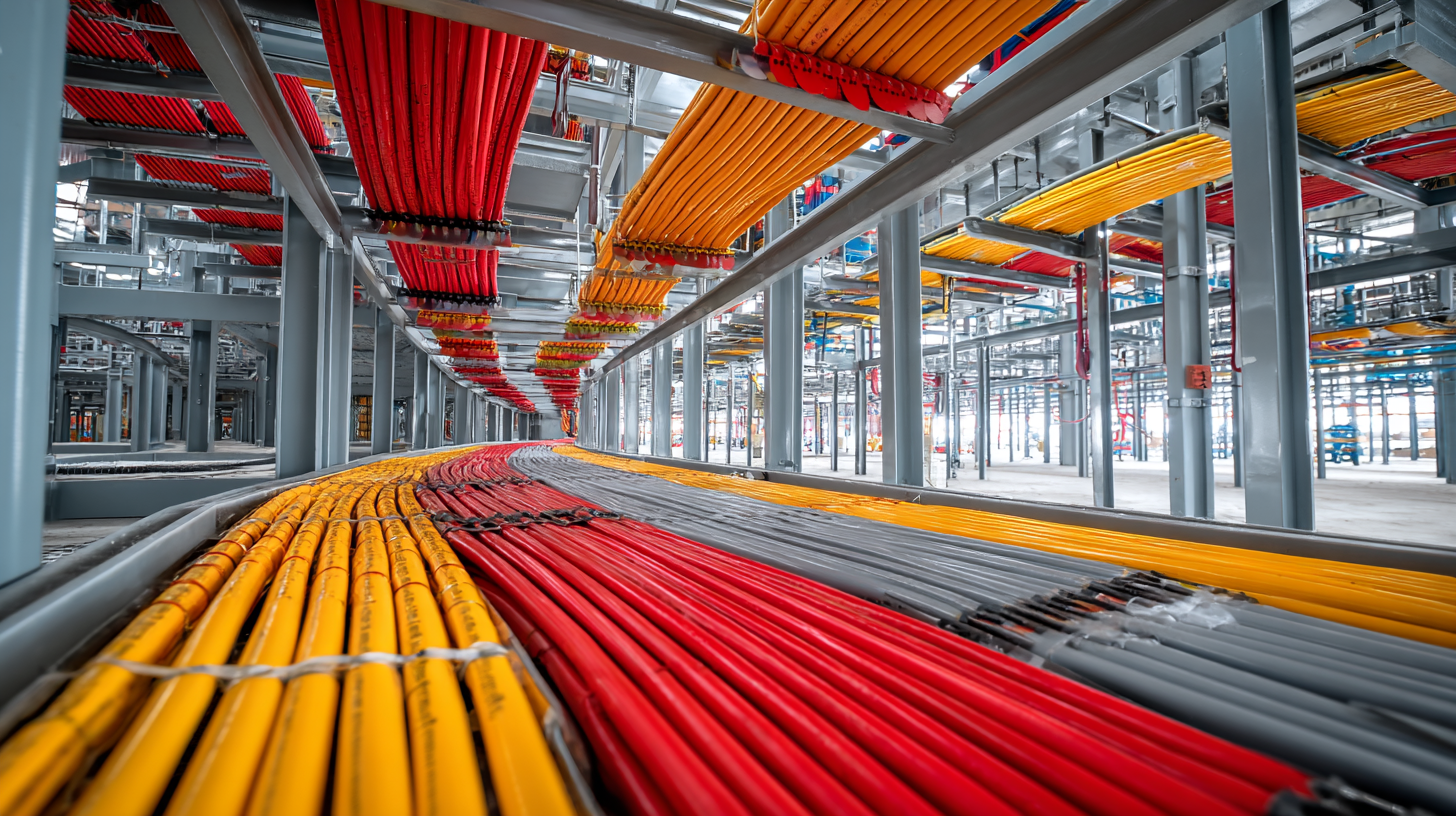In today's rapidly evolving industrial landscape, the choice of materials for infrastructural and operational support systems is critical. One such innovation gaining substantial attention is the FRP (Fiberglass Reinforced Polymer) Cable Tray, which is recognized for its superior durability and corrosion resistance. According to a report by Research and Markets, the global cable tray market is projected to reach USD 8.75 billion by 2026, with FRP cable trays accounting for a significant share due to their lightweight properties and ease of installation. Moreover, industry data suggests that FRP products can outperform traditional materials, such as steel or aluminum, in terms of lifespan and maintenance costs, making them a cost-effective solution for various applications, particularly in harsh environments. As industries strive to improve operational efficiency and sustainability, understanding the compelling reasons to invest in the best FRP cable tray becomes paramount for an enhanced, reliable infrastructure.

When selecting a high-quality FRP (Fiber Reinforced Plastic) cable tray, certain key features make all the difference in ensuring safety and efficiency in cable management. Firstly, durability is paramount; a high-quality FRP cable tray should be resistant to corrosion, chemicals, and adverse environmental conditions. This resilience not only prolongs the lifespan of the installation but also maintains the integrity of the cables housed within.
Secondly, weight-to-strength ratio is crucial. A well-constructed FRP cable tray should offer substantial strength while remaining lightweight. This feature facilitates easier installation and handling, reducing labor costs and effort significantly. Moreover, the thermal resistance of the material is another vital aspect; the tray should be able to withstand high temperatures without compromising on structural strength or performance.
Finally, the design flexibility of FRP cable trays allows for customization to fit specific installation requirements, making them an ideal choice for various industrial applications. By focusing on these critical features, users can make informed decisions and invest in the best FRP cable trays to meet their expanding electrical needs.
When it comes to managing electrical and communication cabling, choosing the right cable tray is crucial for both efficiency and safety.
Fiber Reinforced Plastic (FRP) cable trays are gaining traction in various industries due to their remarkable benefits.
One of the primary advantages of FRP cable trays is their lightweight nature, which makes installation easier and reduces labor costs.
Additionally, they boast impressive resistance to corrosion, making them an ideal choice for harsh environments where metal trays may degrade over time.
Recent market trends indicate a burgeoning demand for FRP cable trays, with projections estimating growth from USD 1.2 billion in 2024 to USD 2.5 billion by 2033, at a compound annual growth rate (CAGR) of 9.2%.
This surge reflects the increasing recognition of FRP solutions for their durability and longevity compared to traditional materials.
Companies are not only expanding their portfolios to include FRP offerings, but they are also innovating in how these products can be utilized in modern construction projects,
particularly in renewable energy sectors where reliable and resilient infrastructure is vital.
When considering the best FRP cable tray for your needs, evaluating supplier credibility is crucial. This involves a deep dive into their adherence to established standards, such as those detailed in the FCDO evaluation policy. Understanding these principles ensures you engage with suppliers who are committed to transparent practices and accountability. Assessing a supplier’s history of delivering quality products and their responsiveness to client feedback can dramatically affect your project's success.
Moreover, supply chain transparency is an essential aspect that cannot be overlooked. It refers to the clarity with which a supplier communicates their processes, sourcing practices, and the ethical implications of their supply chain. In today's global market, the EU's Carbon Border Adjustment Mechanism (CBAM) raises important questions regarding sustainability and regulatory compliance. As companies strive to meet the demands of responsible sourcing, selecting suppliers who prioritize transparency not only enhances product reliability but also fortifies your reputation in a competitive landscape. By choosing a reputable supplier, you can ensure that your FRP cable tray solutions align with both ethical standards and operational excellence.
When selecting the best FRP cable tray for your projects, cost considerations are paramount. Recent industry reports suggest that while FRP (Fiber Reinforced Plastics) options can be 10% to 15% more expensive than traditional materials like steel or aluminum upfront, the long-term savings and value they offer are significant. A study by the Composites Industry Association indicates that FRP solutions can reduce maintenance costs by up to 30% due to their resistance to corrosion and lower weight, which translates into easier installation and less structural support needed.
Furthermore, it's essential to look at the lifecycle cost rather than just the initial purchase price. According to a report by Grand View Research, the demand for FRP cable trays has surged, with a projected CAGR of 6% from 2021 to 2028. This growth is driven by the increasing adoption across industries such as oil and gas, telecommunications, and construction, where reliability and durability are critical. By investing in high-quality FRP cable trays, companies can ensure compliance with safety standards while minimizing downtime due to repairs or replacements, thus achieving true value without compromising on quality.

When selecting a supplier for your FRP cable trays, after-sales support should be at the forefront of your decision-making process. The installation of cable trays is a critical component for any project, and effective after-sales assistance can save you time, money, and stress in the long run. Suppliers who provide robust after-sales support are more likely to ensure that your products function correctly and meet industry standards. They offer services such as technical advice, replacement parts, and guidance during installation, which can enhance the overall efficiency and longevity of your cable management system.

Moreover, after-sales support reflects the supplier's commitment to customer satisfaction. A reliable supplier will be available to address any issues that arise after installation, providing you with peace of mind. This is particularly important when dealing with complex projects where unexpected challenges can occur. Prioritizing a supplier that values after-sales service ensures that you are not just purchasing a product but also investing in a long-term partnership that can adapt to your evolving needs and help navigate any technical difficulties you may encounter.
TradeManager
Skype
VKontakte

